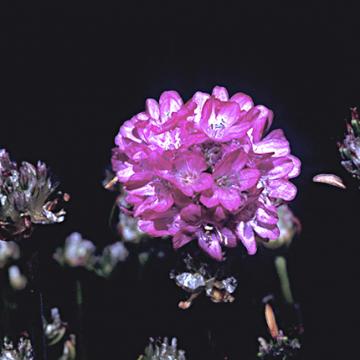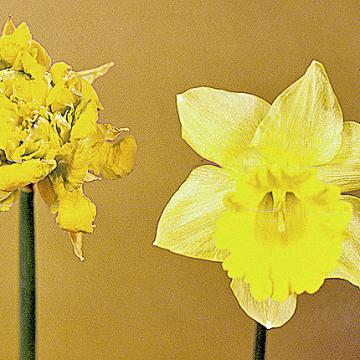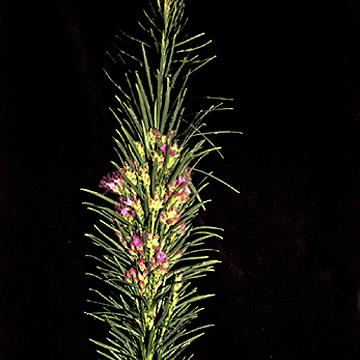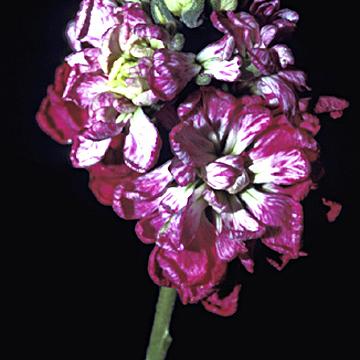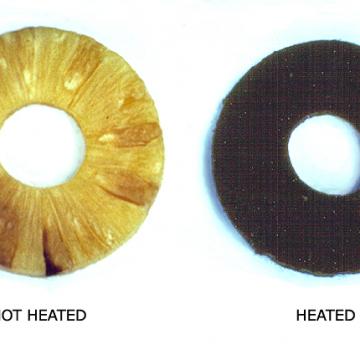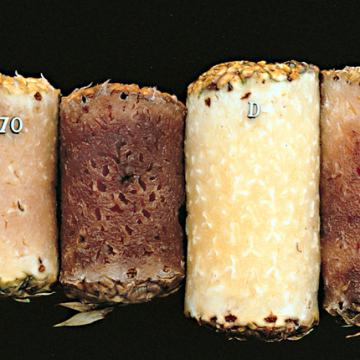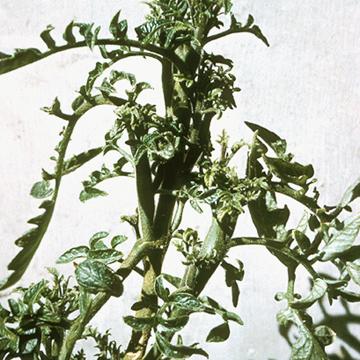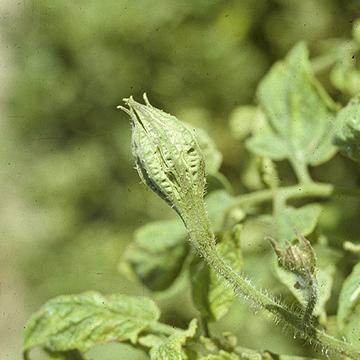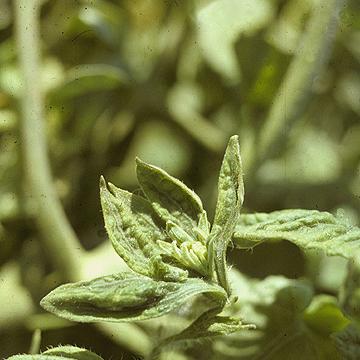DISEASE: Phytoplasma disease
HOST: Armeria
Phytoplasma-infected armeria (left and right) compared with healthy plant (center).
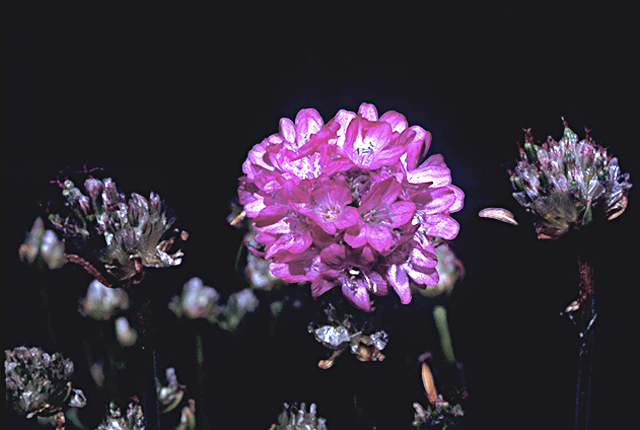
Phytoplasma disease | Armeria
DISEASE: Phytoplasma disease
HOST: Armeria (Armeria maritima)
PATHOGEN: 'Candidatus Phytoplasma' sp.
PATHOGEN SYNONYM: Phytoplasma (undefined)
SOURCE: R. Raabe
DISEASE: Phytoplasma disease
HOST: Daffodil
Phytoplasma disease of daffodil. Healthy (right).
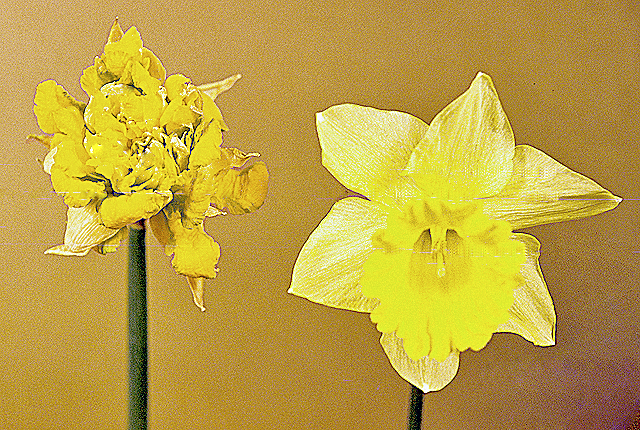
Phytoplasma disease | Daffodil
DISEASE: Phytoplasma disease
HOST: Daffodil (Narcissus pseudonarcissus)
PATHOGEN: 'Candidatus Phytoplasma' sp.
PATHOGEN SYNONYM: Phytoplasma (undefined)
SOURCE: R. Raabe
DISEASE: Phytoplasma disease
HOST: Gayfeather
Gayfeather with phyllody of flowers.
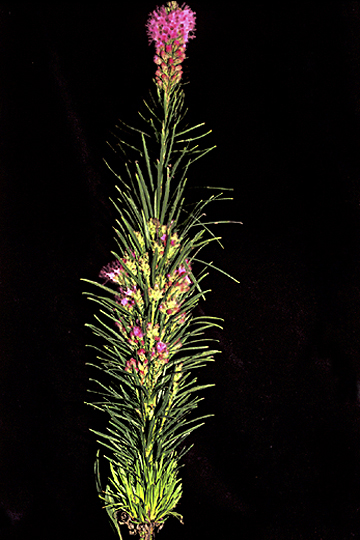
Phytoplasma disease | Gayfeather
DISEASE: Phytoplasma disease
HOST: Gayfeather (Liatris sp.)
PATHOGEN: 'Candidatus Phytoplasma asteris'
PATHOGEN SYNONYM: Phytoplasma Aster yellows group
SOURCE: R. Raabe
DISEASE: Phytoplasma disease
HOST: Stock
The disease causes malformation and arrested development of flowers.
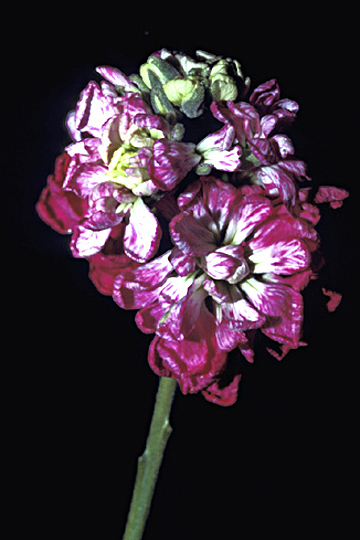
Phytoplasma disease | Stock
DISEASE: Phytoplasma disease
HOST: Stock (Matthiola incana)
PATHOGEN: 'Candidatus Phytoplasma' sp.
PATHOGEN SYNONYM: Phytoplasma (undefined)
SOURCE: R. Raabe
DISEASE: Pink disease
HOST: Pineapple
Infected pineapple slices; effect of heating (right) and not heating (left).
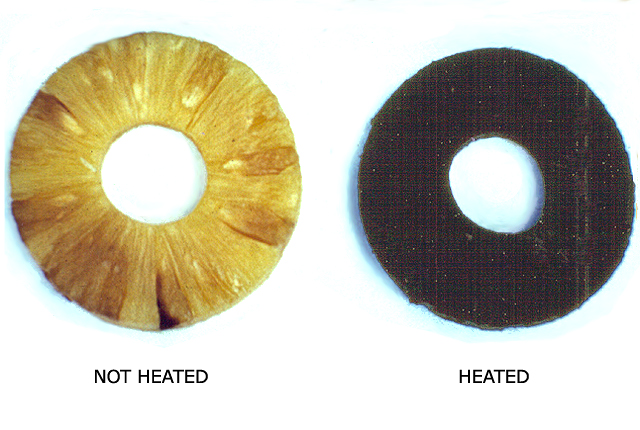
Pink disease | Pineapple
DISEASE: Pink disease
HOST: Pineapple (Ananas comosus)
PATHOGEN: Tatumella citrea
PATHOGEN SYNONYM: Pantoea citrea
SOURCE: K. Rohrbach, A. Alvarez
DISEASE: Pink disease
HOST: Pineapple
Two clones (A and D) showing different stages of infection. Second and fourth fruits (left to right) have been heated. Disease originally attributed to Gluconobacter oxydans and Enterobacter agglomerans and later to Pantoea citrea.
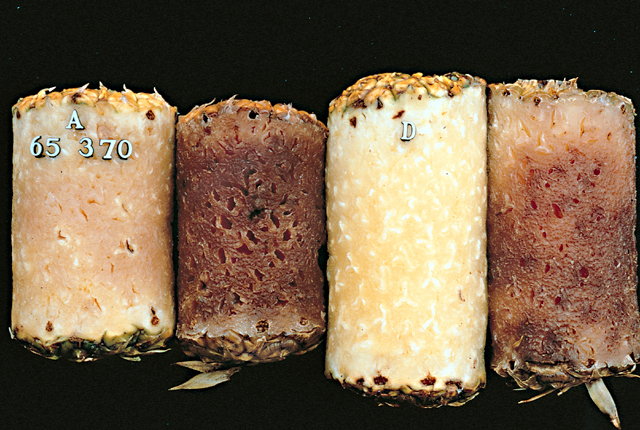
Pink disease | Pineapple
DISEASE: Pink disease
HOST: Pineapple (Ananas comosus)
PATHOGEN: Tatumella citrea
PATHOGEN SYNONYM: Pantoea citrea
SOURCE: K. Rohrbach
DISEASE: Tomato big bud
HOST: Tomato
Characteristic symptoms are swollen, apical stems and stunted leaves. Apical stems are generally thickened and assume a stiff and erect growth habit. Internodes are shortened and flower buds are greatly enlarged.
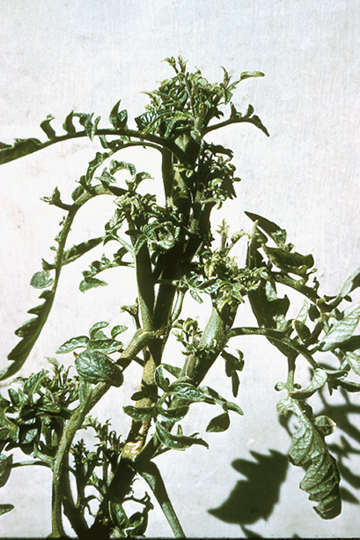
Tomato big bud | Tomato
DISEASE: Tomato big bud
HOST: Tomato (Lycopersicon esculentum)
PATHOGEN: 'Candidatus Phytoplasma asteris'
PATHOGEN SYNONYM: Phytoplasma Aster yellows group
SOURCE: D. Teakle
DISEASE: Tomato big bud
HOST: Tomato
Symptoms are enlarge sepals that do not separate. Flower buds stay green and do not develop into fruit. Leaves are small and chlorotic.
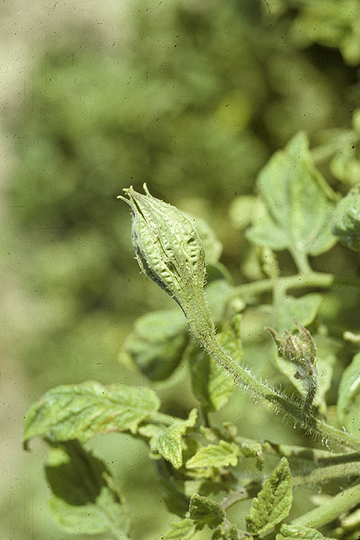
Tomato big bud | Tomato
DISEASE: Tomato big bud
HOST: Tomato (Lycopersicon esculentum)
PATHOGEN: 'Candidatus Phytoplasma asteris'
PATHOGEN SYNONYM: Phytoplasma Aster yellows group
SOURCE: S. Thomson
DISEASE: Tomato big bud
HOST: Tomato
Abnormal flower bud with greatly enlarged sepals. Sepals do not separate, fruit is not produced, and apical growth is upright.
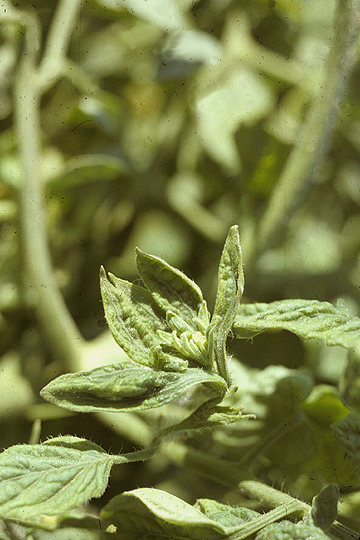
Tomato big bud | Tomato
DISEASE: Tomato big bud
HOST: Tomato (Lycopersicon esculentum)
PATHOGEN: 'Candidatus Phytoplasma asteris'
PATHOGEN SYNONYM: Phytoplasma Aster yellows group
SOURCE: S. Thomson


